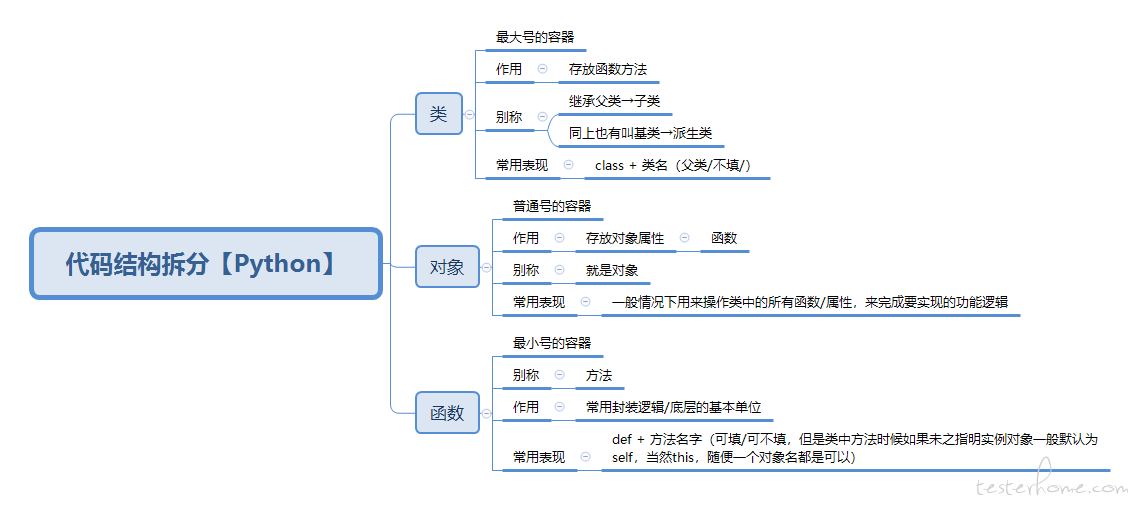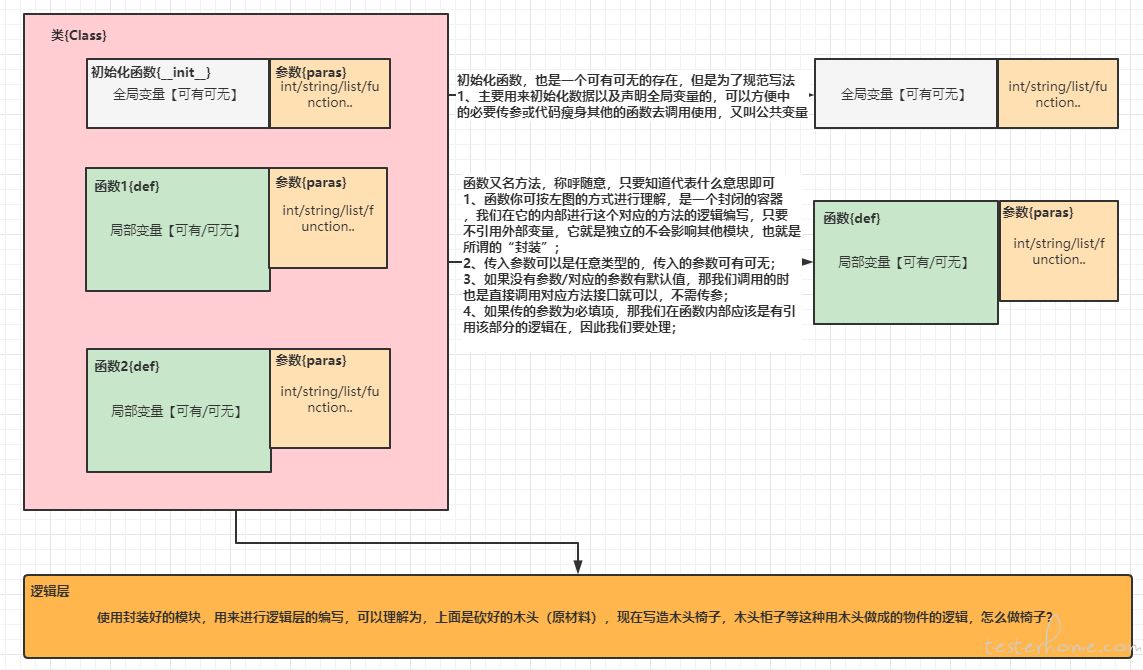常用的代码整体结构,拆分后主要关注的点就三块

case 举例查看常用的代码结构
class StudyTest(object):
# 初始化函数
def __init__(self, A, B=5):
# 全局变量
self.a = A
self.b = B
'''
测试一
1、无参数调用;
2、调用全局变量;
'''
def test1(self):
print(self.a + self.b)
'''
测试二
1、有参数调用,但是设置了默认值;
2、调用全局变量;
'''
def test2(self, a=1):
print(self.a + self.b + a)
'''
测试三
1、有参数调用,未设置默认值[必传参数,不传会报错];
2、调用全局变量
'''
def test3(self, a):
print(self.a + self.b + a)
if __name__ == '__main__':
studytest = StudyTest(10, 10)
studytest.test1()
studytest.test2()
studytest.test3(2)
上图的预期结果:
D:\python\python.exe E:/work_tools/record_phone/__init__.py
20
21
22
进程已结束,退出代码为 0
从上图可以看出,我们常用的代码结构基本可以同化成以下结构图,
代码结构图

「原创声明:保留所有权利,禁止转载」